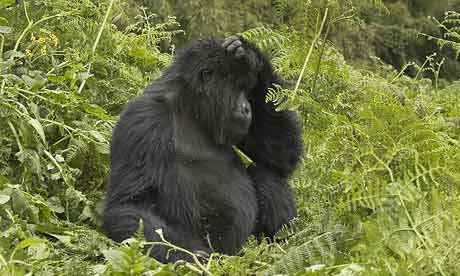TOP STORIES Report finds golden eagle decline
Report finds golden eagle decline
BBC News - news.bbc.co.uk
01 Jul 2008
Area: Scotland United Kingdom
The use of illegal poisons has been identified as one of the main reasons behind a decline in golden eagles. Government agency Scottish Natural Heritage (SNH) said three out of 16 regions in Scotland studied had stable, or expanding populations. Falls in numbers were found in areas with habitat suited to the bird. Scottish Environment Minister Michael Russell said the report provided further proof poisoned baits continued to blight Scotland.
Fungus Quickly Decimates Endangered Frogs
Current Results - www.currentresults.com
01 Jul 2008
L Osborn
Area: Panama
The well-documented demise of an endangered frog reveals how swiftly the deadly chytrid fungus can decimate amphibians. Scientists have measured Bob's robber frog (Craugastor punctariolus) populations at three tropical streams since 1999. The frog, which only inhabits forests of western and central Panama, is an endangered species. But at these protected sites in Parque Nacional Omar Torríjos, the amphibians were abundant. Among the creek boulders, researchers counted anywhere from 19 to 68 frogs along a 200-metre transect.
>>>FULL ARTICLE
Cited Journal Article
>>>Decline and extirpation of an endangered Panamanian stream frog population (Craugastor punctariolus) due to an outbreak of chytridiomycosis. Biological Conservation. 2008 Jun; 141(6): 1636-1647.
Cited Journal Article
>>>Decline and extirpation of an endangered Panamanian stream frog population (Craugastor punctariolus) due to an outbreak of chytridiomycosis. Biological Conservation. 2008 Jun; 141(6): 1636-1647.
 Failing to Make Females, Reptile Could Go Extinct
Failing to Make Females, Reptile Could Go ExtinctLiveScience - www.livescience.com
02 Jul 2008
J Bryner
Image courtesy of Nicky Nelson/Victoria University
Area: New Zealand
A world without females may not be worth living in. And in fact extinction would be imminent. That's the lonely and dire prospect faced by the tuatara. With rising temperatures, this endangered reptile could produce all male offspring by 2085, guaranteeing its extinction, a new study finds. The spiny reptiles, about 30 inches (80 cm) long, are confined to small islands off the coast of New Zealand. Two tuatara species (Sphenodon punctatus and Sphenodon guntheri) are the only surviving members of the Sphenodontian family, which roamed the Earth about 200 million years ago along with the dinosaurs.
VIDEO: Aussie Platypuses Suffer Illness
National Geographic News - news.nationalgeographic.com
01 Jul 2008
Area: Tasmania Australia - Map It

Australian scientists are conducting field studies to track a fungal infection that has been killing Tasmanian platypuses for more than 25 years.
Last Week's Top 10 Digest Links
1. Extreme Weather Events Can Unleash A 'Perfect Storm' Of Infectious Diseases, Research Study Says
2. Climate Extremes Promote Fatal Co-Infections during Canine Distemper Epidemics in African Lions [journal article]
3. Even vegetarians may not be safe from 'mad cow' prions
4. Emerging Infectious Diseases. Volume 14, Number 7–July 2008. [journal TOC)
5. Pictured: The moment a wildlife officer risked his life to save drowning bear
6. Something to crow about in Alaska [beak deformities in birds]
7. To Find Out What's Eating Bats, Biologist Takes To Barn Rooftops [white nose syndrome news] [journal article]
8. Journal of Zoo and Wildlife Medicine. Volume 39, Issue 2 (June 2008) [journal TOC]
9. Unlikely Heroes: Goats Rescue N.Y. Bog Turtles [audio broadcast available too]
10. Recent Mortality Events - USGS National Wildlife Health Center
OTHER WILDLIFE HEALTH RELATED NEWS
Image courtesy of The Guardian
 Pictured: Biodiversity: Some species could be wiped out 100 times faster than feared, say researchers
Pictured: Biodiversity: Some species could be wiped out 100 times faster than feared, say researchers
WILDLIFE HEALTH RELATED PUBLICATIONS
Avian haemosporidian parasites infection in wild birds inhabiting Minami-daito Island of the northwest Pacific, Japan
Journal of Veterinary Medical Science. 2008 May; 70 (5): 501-503 MAY 2008 [free full-text available]
K Murata et al.
Experimental transmission of bovine spongiform encephalopathy to European red deer (Cervus elaphus elaphus).
BMC Veterinary Research. 2008 May 28; 4: 17-17 [free full-text available]
MP Dagleish et al.






No comments:
Post a Comment